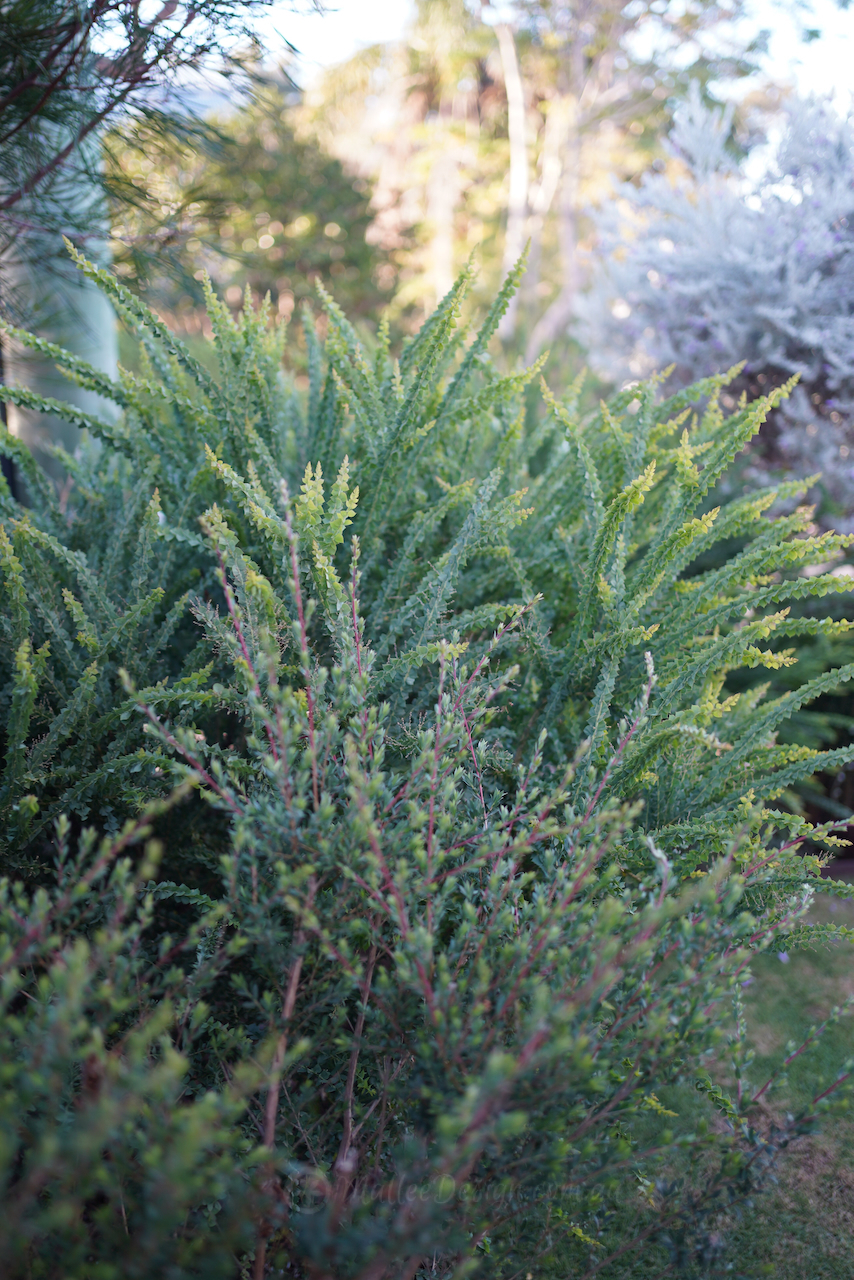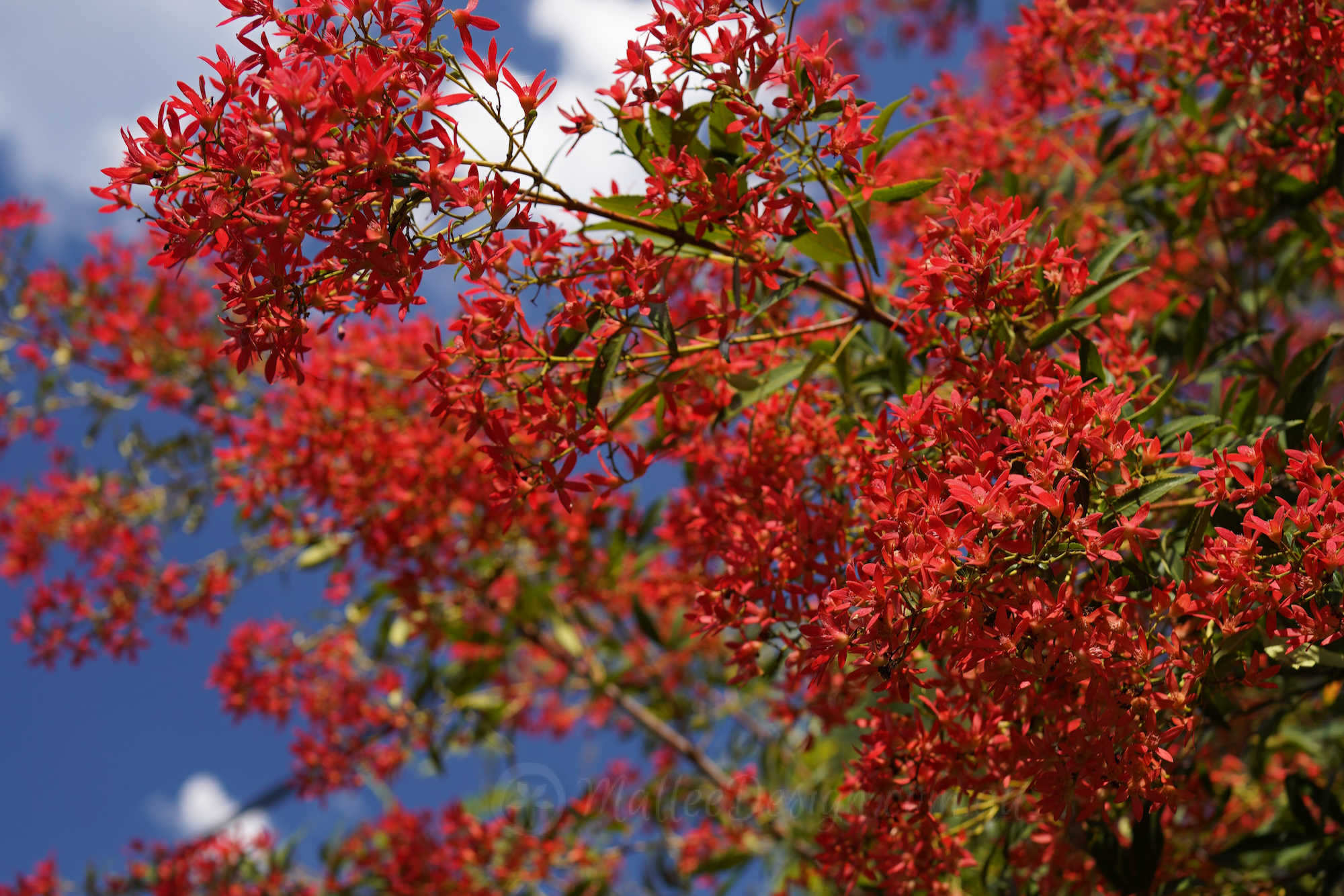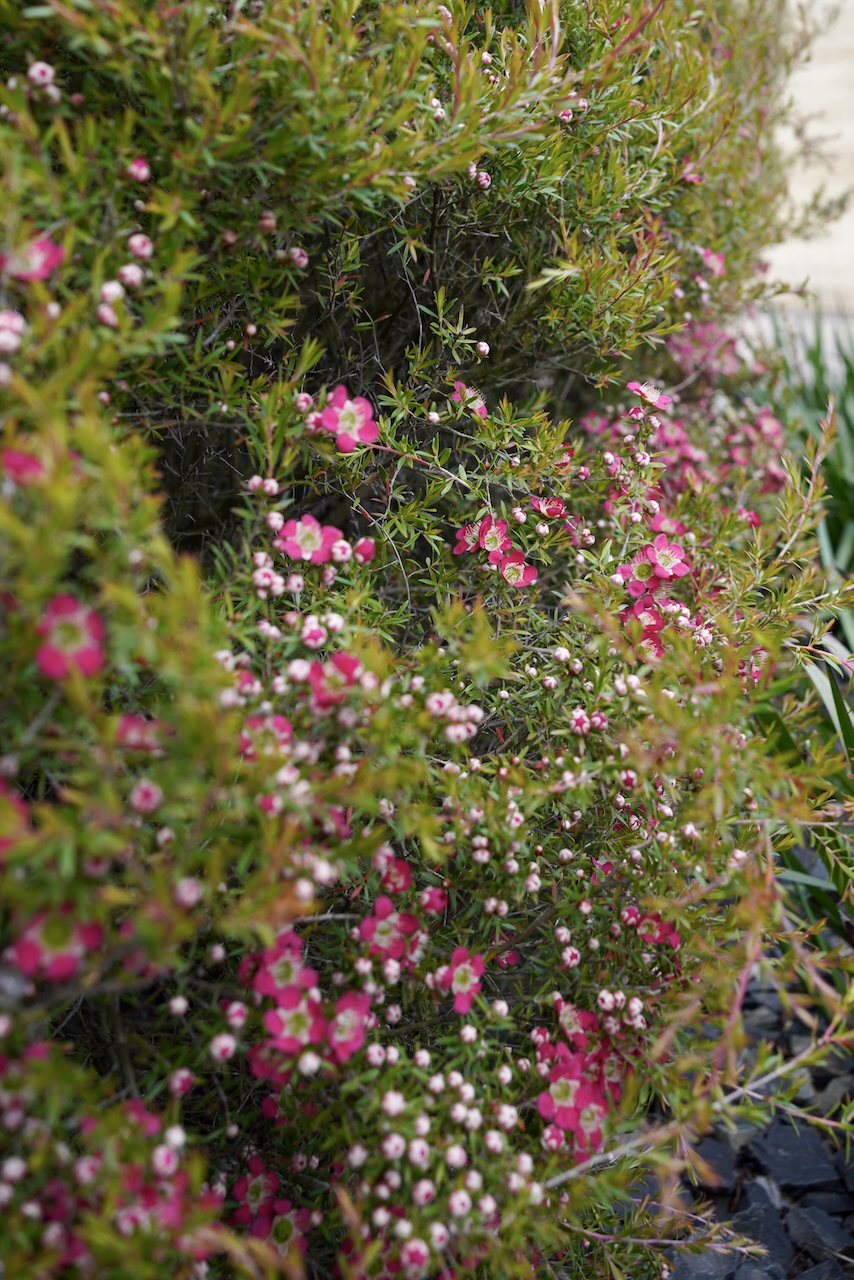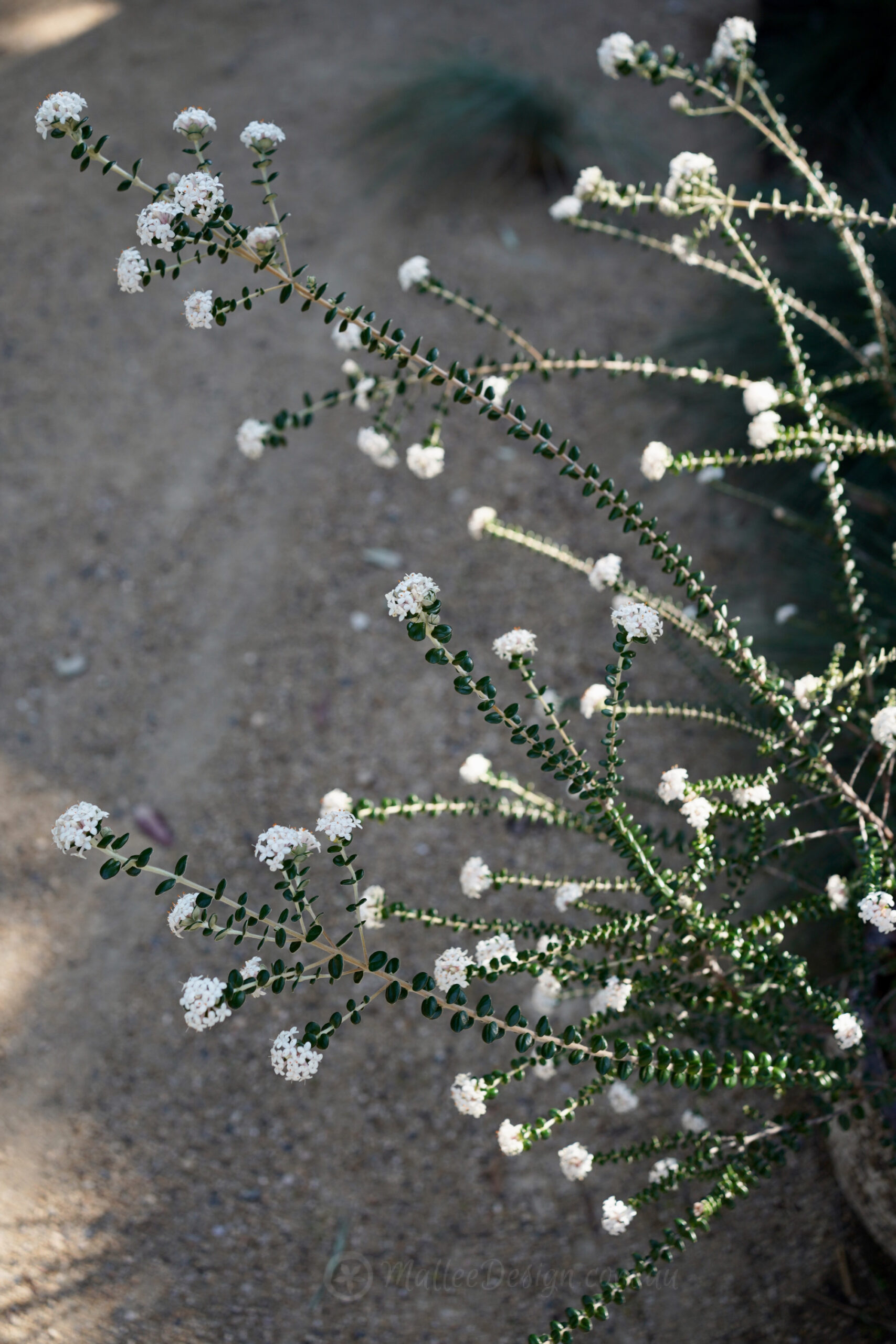-

The purity of Grevillea ‘Ivory Whip’
I am quite selective and fussy when it comes to large flowering spike Grevilleas, some of them I find incredibly garish and I dislike the way they attract the aggressive nectar feeding birds. For some reason this medium sized Grafted Grevillea remains an exception for me. The flowers of Grevillea ‘Ivory Whip’ are not in…
-

Hakea ‘Pinball’ for all
This is a grafted form of the very showy Pin Cushion Hakea, Hakea laurina, which hails from south-western WA. This is a wonderful grafted species which means we can now grow these very iconic flowers in areas with higher humidity and a heavier soil, it is actually also a cultivar: Hakea laurina x petiolaris. I…
-

What to Plant for Poorly Drained Soils and temporary inundation
I am adding to this post as here on the East coast of NSW we continue to have flooding, heavy downpours and associated erosion. It has been over 3 years of this tumultuous weather and this particular blog post has been getting quite a lot of visits. The past few years have also given me…
-

Distinct hot pink: Melaleuca fulgens
Melaleuca fulgens hails from the West of Australia, no surprise there, however it can be found growing in the southern and eastern states quite happily. This species has a long flowering period from Winter through to Summer and as the blooms are such a bright highlight it is hard to miss. This is the pink…
-

The most weeping of the weeping: Myoporum floribundum
I am obsessed with plants with a weeping habit or drooping foliage, some people find them sad and depressing looking but they are my favourite. There are many native plants with soft long leaves or gently falling branches, they can create dense screens, focal points or backdrops. Weeping foliage in a garden gives a relaxed informal…
-

A spikey, perfumed tangle of Grevillea flexuosa
This is a wonderfully messy Grevillea that likes to sprawl all over the place. Its stems literally get tangled in themselves and the leaves are stiff and spikey so they can almost grab onto other plants to hoist themselves towards the sunlight and as its name implies it is so very flexible 😉 Grevillea flexuosa…
-

Pimelea: which one is which
I love Pimeleas, they seem to always be in flower and each state has its own unique species. Pimelea’s are a stunning addition to a garden or even a pot. They put on a show with a mass of flowers and the butterflies love them . But which one is which? We are trying our…
-

Lovely shrub of many names: Veronica perfoliata
This is to my knowledge currently Veronica perfoliata, it has gone through several differing identities and name changes, I won’t go into all of that, it just seems a shame as I think it may have detracted people from knowing about this useful plant. Firstly I love it because it has a very Eucalypt like foliage…
-

Merry NSW Christmas Bush: Ceratopetalum gummiferum
I am a bit of a Grinch when it comes to Christmas and often one of the things which pulls me our of my un-festive slump is our Ceratopetalum gummiferum or native Christmas Bush. This year I was a little late, as many have finished thier show by the time Christmas actually arrives. However, I…
-

The oh so fun Leptospermum ‘outrageous’
Leptospermum ‘Outrageous’ puts on a show of brilliant pink-red flowers in Spring, and it absolutely covers itself as the weeks go on. This medium shrub has delicate weeping branches and it can be pruned into a low hedge or border plant. It is also showy enough to be a great feature shrub even when not…
-

Spillover for the pollinators: Leptospermum ‘vertical drop’
Most of us know how wonderful Tea trees are for our pollinators and honey bees, and Leptospermum polygalifolium is up there with some of the most floriferous. This gorgeous low growing and cascading form is Leptospermum polygalifolium ssp. cismontanum ‘Vertical Drop’. This sub species naturally grows on the east coast of Australia in sandy and…
-

The unique Viminaria juncea
There aren’t many plants which you could get this species confused with, especially when it is in full flower. Viminaria juncea is a stand out feature shrub or small tree which is quite common in our bushland but not so often seen in cultivation. Shrub to 5mts tall The yellow pea flowers located on long,…
-

Bee Friendly Grevillea: Grevillea sericea
This is a local spider flower Grevillea which has huge ornamental potential and is a master at attracting native pollinator and honey bees to your garden. It is quite a common species on the east coast of NSW and can be found growing naturally from Toronto in the north to Heathcote in the South of…
-

Tough as nails: Actinotus helianthi
I’ve learnt my lesson, plant them and leave them alone! I planted 5 potted Actinotus helianthi last year in my garden, 1 remains, the others were over loved and over watered I think, or there may have been some trampling going on courtesy of kids playing on the swing. Actinotus helianthi are wildflowers, it can…
-

Pimelea nivea: A shrub of contrasts
Pimeleas are wonderful species, they grow quickly and flower often, for long periods of time. However this particular Pimelea is my favourite of all time, forever. This is Pimelea nivea and hails from my home state of Tasmania, I have seen it growing on rocky headlands and gravely Eucalyptus under storey and it is a very…
-

Happy Wattle Day: Acacia aphylla
Happy National Wattle Day and the official first day of Spring, although the weather where I live has been behaving more like Summer, which is extremely concerning. Nevertheless I am always happy to celebrate our Acacia species and this one I have been so patiently waiting for it to flower, and finally starting in Autumn…
-

Calothamnus quadrifidus grey: texture and toughness
I thought I had already dedicated a blog post to this steadfast native shrub but have just realised it has featured a few times but hasn’t been praised individually yet. Very strange as this is a staple in many of my screening plantings or used as a feature shrub, especially as it will quite happily…
-

The multifaceted Eremophila oppositifolia
Eremophila oppositifolia is very deceiving , it appears delicate and a little fussy but in actual fact it is one of the hardiest native shrubs around. Most Eremophila or Emu bush grow naturally in Western and Southern Australia and although they come from area with a Mediterranean climate many of them are quite adaptable in…
-

The little known Banksia ericifolia ‘Little Eric’
Banksias all over Australia are hitting their flowering stride this season, from Autumn until Spring is when most Banksia species will be covered in nectar rich flower spikes. Most people are familiar with the Dwarf Banksia spinulosa cultivars like ‘Birthday Candles’ and ‘Coastal Cushions’. This post is a little shout out to a lesser know…
-

The Invaluable Grevillea ‘Dorothy gordon’
I struggle a little with some of the Large flowering Grevilleas, they tend to attract the more aggressive nectar feeding birds like Rainbow Lorikeets and Noisy Miners. These birds then tend to dominate the garden scaring away the smaller more timid birds. However I do make an exception for a hand full of large flowering…
-

Soft and Foamy Grevillea’Seaspray’
Generally I am drawn to plants which are tactile and gentle, whether that be a weeping habit, furry leaf or light breezy foliage. By nature many of our Australian native plants have a grey or silver leaf, which helps them withstand extreme heat or salty sea air, this type of leaf I love as it…
-

the always blooming Grevillea × semperflorens
This is a little known Grevillea Hybrid which has been around for a long time, I have never really understood why this Grevillea isn’t more widely used. It is highly ornamental and spends much of the year in flower. In fact semperflorens actually means always blooming. It is a hrybrid between G. thelemanniana and a yellow-flowered…
-

for lovers of purple:Melaleuca nesophila
I must admit purple is not one of my favourite colours and when clients specify purple flowers I often come up a blank and can only think of Hardenbergia, which is completely ridiculous as there are Brachyscome, Scaevola, Patersonia and soooo many Melaleucas have purple flowers, silly me. This one is one of my favourites…
-

Two top Thomasias: Thomasia macrocarpa and Thomasia solanacea
Thomasia is a native shrub species which can be found largely in the south of Western Australia, like many of the species located in that area of Australia it is quite adaptable. For some reason all of this genus is endowed with showy, textured foliage like few other native species, making them a wonderful edition…
Category: Feature shrub

